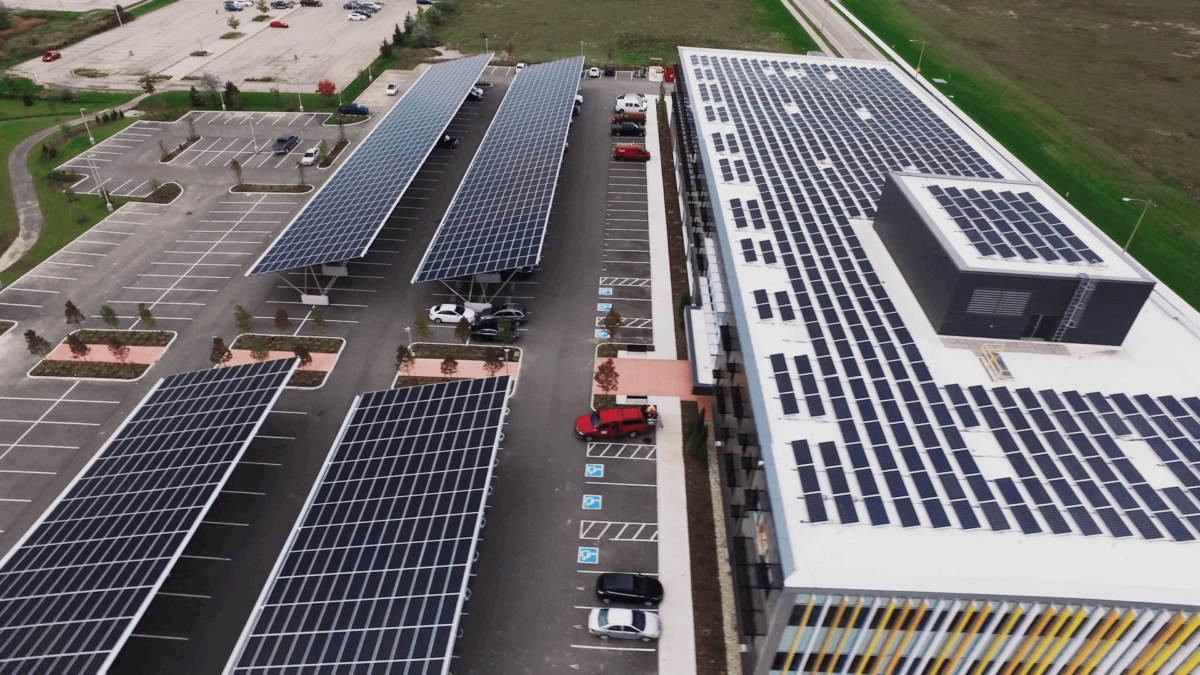PV panel assembler Heliene announced the opening of a 420 MW plant in Minnesota, adding to the Canadian company’s existing 150 MW operation in the state. The facility is set to assemble monofacial and bifacial panels with half-cut cells.
Following the hiring of 60 additional worker for the new facility, Heliene now employs 100 Minnesotans. The company began construction of the new facility prior to the passage of the Inflation Reduction Act, achieving operation without taking in the newly-established manufacturing tax credits.
To support the $21 million expansion, the Minnesota Department of Employee and Economic Development and Iron Range Resources & Rehabilitation each provided a $2.75 million loan to a local economic development agency.
In addition, Heliene received a $5.5 million grant from the State of Minnesota’s Renewable Development Account, which funds projects that boost the state’s electrification and climate change abatement efforts. St. Louis County, where the Mountain Iron plant is located, awarded Heliene a $1 million grant as well.
The factory was built in less than one year. Heliene CEO Martin Pochtaruk said the company will spend $7 million on updated equipment for the 150 MW plant, with aims to double its capacity to 300 MW. Pochtaruk said the company expects this upgrade to be complete by July 2023.
In September, Heliene announced it will source its solar glass from Canadian Premium Sand, signing on for about 40% of the glass provider’s total capacity.
“Amid exploding solar demand and trade volatility, our customers seek peace of mind that they are receiving the highest quality, competitively priced solar modules exactly when and where they need them. Having CPS supply us with a low-carbon glass, free of any geopolitical pressures is an enormous leap forward in the right direction,” said Pochtaruk.
Quantum-dot agrivoltaics modules
In March, Heliene announced it entered a joint development agreement to create transparent agrivolatic modules for greenhouses. Heliene’s partner company, UbiQD, utilizes luminescent quantum dot tinting to concentrate solar energy and generate electricity while maintaining transparency. The technology allows plant-nourishing light to pass through, while maintaining energy production.
The UbiQD “UbiGro” panels glow a spectrum of color that is optimized for plant growth, absorbing UV and blue light and emitting fruitful orange or red light.
In recent trials, UbiGro led to a 21% boost in flowering in geranium flowers, a 14 to 28% boost in winter strawberry growth, and an 8% yield increase in cannabis production. Increased crop yields are a welcome sign to any grower, and the two companies are set to take that benefit one step further, integrating productive solar PV in the greenhouse-topping modules.
This content is protected by copyright and may not be reused. If you want to cooperate with us and would like to reuse some of our content, please contact: editors@pv-magazine.com.









By submitting this form you agree to pv magazine using your data for the purposes of publishing your comment.
Your personal data will only be disclosed or otherwise transmitted to third parties for the purposes of spam filtering or if this is necessary for technical maintenance of the website. Any other transfer to third parties will not take place unless this is justified on the basis of applicable data protection regulations or if pv magazine is legally obliged to do so.
You may revoke this consent at any time with effect for the future, in which case your personal data will be deleted immediately. Otherwise, your data will be deleted if pv magazine has processed your request or the purpose of data storage is fulfilled.
Further information on data privacy can be found in our Data Protection Policy.